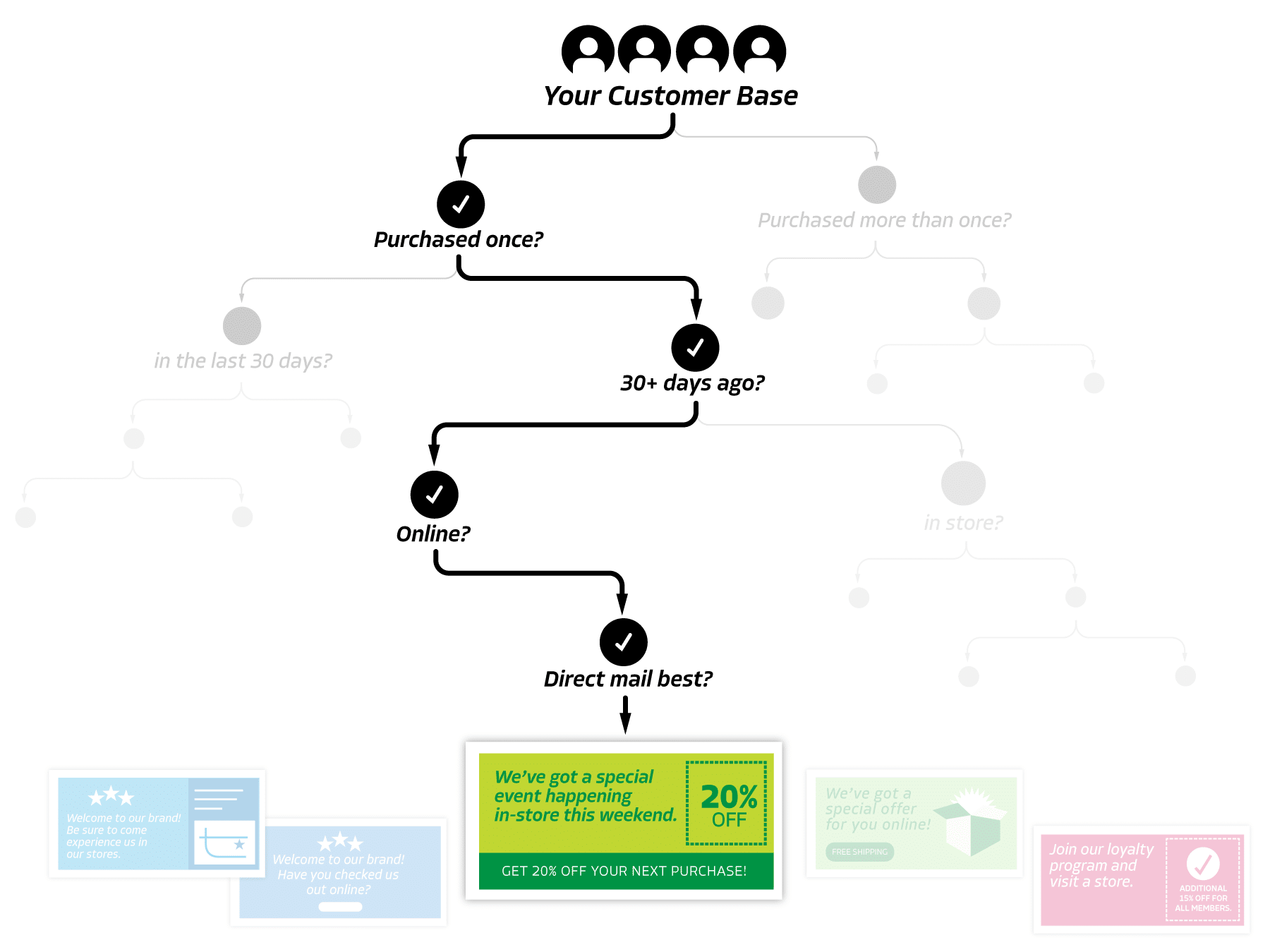IMPOSSIBLY FAST. DANGEROUSLY ACCURATE.
“Are you overspending on marketing? Here’s how to make sure you aren’t.”
A starter guide to high-impact customer segmentation and targeting

If you’ve ever received an email promoting a product that’s got nothing to do with your interests (and you have!), you know the frustration. It might be coming from a brand you like, but it feels like they aren’t paying attention to what kind of customer you actually are.
And that’s because they aren’t.
So how can you avoid being that marketer?
If you’re sending mass messages to your entire customer base at once, you’re doing more than frustrating your customers—you’re almost certainly overspending. You might be over-mailing catalogs to lapsed customers, over-buying advertising to the wrong customers, or over-discounting customers who will buy no matter what.
Strategically targeting the right customers with the right message not only improves the health of your customer file, it also increases your potential for growth.
Fortunately, it’s easier to target customers than you think, especially if you have the right tools.
Four steps to targeting your customers more effectively.
1. First, get clear about what actually drives revenue.
The most successful brands are doing more than just acquiring new customers; they’re also marketing very strategically to their existing customers. They understand that when you leverage your existing customer base, you have incredible power to impact sales.
So, in addition to acquiring new customers, be sure your brand is focused on these three goals:
- Increasing the number of high-value customers
- Getting one-time buyers to make a second purchase
- Getting online shoppers to come into a store—and vice versa
2. Next, assess your current targeting strategy.
To get a quick picture of how your brand is doing when it comes to segmenting customers, ask yourself and your team a few questions:
- Do we know which of our customers are our most valuable customers?
- If so, are we targeting them differently than other customers?
- Do we have a strategy in place to entice first-time buyers to come back for more?
- Are we able to predict which of our customers are most likely to buy again? (Do we have the tools to do this? Is our data clean enough to do this?)
- Can we take that one step further and predict who is most likely to buy each specific product?
- Do we know how many of our customers have passively opted out of our emails?
If the answer to any of these questions is no, keep reading. You could achieve significant gains simply by establishing a customer segmentation strategy.
3. Then, start small.
If you haven’t been doing much (or any) segmentation of your customer audiences, don’t try to jump right into ultra-customized targeting. Instead, divide your current customer base into two segments and treat those segments differently. Speak to the unique needs of each of those two buckets, and you’ll see a lift in engagement.
Start by dividing your customers into any of these four groupings below.
4. Now, further customize your audiences by stacking those buckets together.
Once you’ve started testing those basic segmentations above, you can improve your strategy by combining them. Here’s an example of how that could look.

Click here to download a full illustration of how to target your customers by each unique segment, with examples of how you could customize your marketing messages for different scenarios.
That’s just the beginning.
Once you’ve started segmenting, you can continue to get more and more targeted with each customer.
Let’s say you want to promote a new line of dresses. Sending a dress ad to customers who have only ever purchased athletic gear would be a miss. The best way to target the right customers is to create a predictive model that tells you who’s most likely to purchase dresses.
Once you have that, you could run those customers through the same filters in the chart above, so you can learn: Which dress customers have only purchased from you once? Which have only bought in stores? Which are digitally engaged?
The better your tools, the easier this is.
As you can see, the more targeted you get, the more you’ll require a good audience builder that can also build predictive models as you get more sophisticated.




